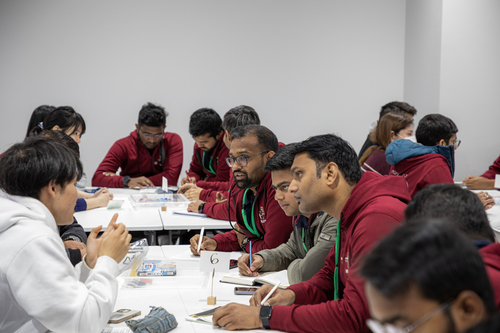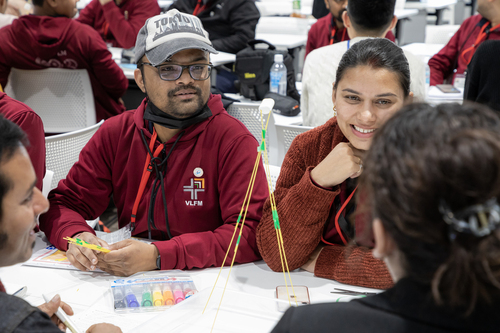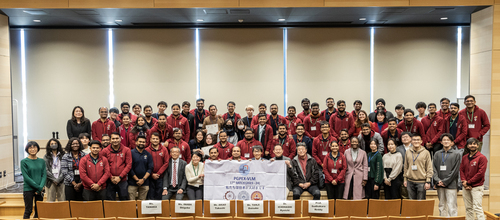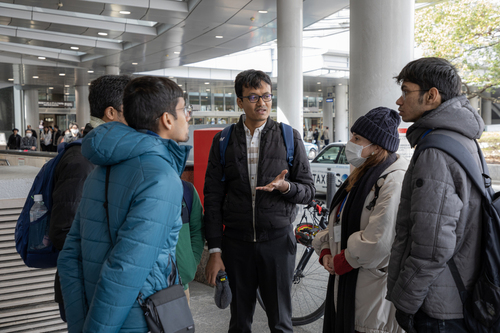Nagoya University plays a crucial role in promoting international collaboration within and beyond the university. Cooperating with the Japan International Cooperation Agency (JICA), Nagoya University welcomed 40 Indian students from three Indian institutions (Indian Institute of Technology - Kanpur, Indian Institute of Technology - Madras, and Indian Institute of Management - Calcutta) to the Higashiyama Campus last week.
To cultivate future leaders in Indian manufacturing industries, the students joined the PGPEX master's degree program and traveled to Japan. Students were divided into 10 groups, ensuring that each group had at least one Nagoya University student. They then explored important areas of Nagoya, with the aim of presenting a business idea that enhances accessibility for older adults and disabled people. The participants from Nagoya University included Japanese students and international students from the G30 International Programs.

 PGPEX and Nagoya University students getting to know each other (above) and completing the spaghetti tower team building challenge (below)
PGPEX and Nagoya University students getting to know each other (above) and completing the spaghetti tower team building challenge (below)
The week kicked off with a session focused on introductions and team-building exercises. The students then formed groups and explored important areas of the city such as Sakae, Nagoya Station, and Osu. The areas were assessed for accessibility and the public was consulted on their challenges and ways to enhance accessibility. The JICA facility in Sasashima, close to Nagoya Station, served as their headquarters for project development and business pitches. On returning to Nagoya University, the groups presented their proposals to a panel of observers, which included representatives from Nagoya University, JICA, and experts in India-Japan cooperation. The concepts included accessible multimodal transport systems and integration of RFID technology into bus passes carried by older adults that traffic signals would detect, allowing them more time to cross a road.
I joined Group 10 during their visit to the Nagoya station area. One of the Indian students informed me that it was interesting to see how accessibility had been implemented after rapid economic development in Japan in the 20th century. "India is experiencing rapid growth right now but policy on issues such as accessibility is struggling to keep up," he said. "This is a great opportunity to learn from the Japanese example."
The Nagoya University student in Group 10 was Navin, an international student from India. He is a student in the G30 International Program. This is Nagoya University's all-English language undergraduate and graduate degree program that allows students from around the world to study in Japan.
 Students from India and Nagoya University with program staff following their final presentations
Students from India and Nagoya University with program staff following their final presentations
Nagoya University continues to strengthen ties with Indian universities and work with JICA and other public bodies to enhance student education and exchange opportunities. Interested students are invited to explore the different programs we have available.

